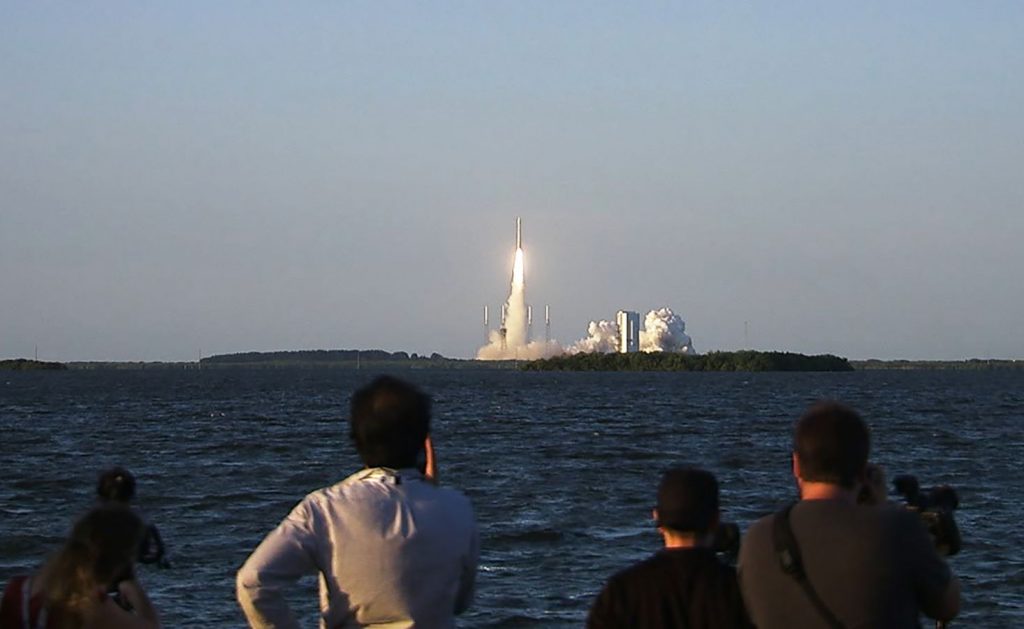NASA knows that humankind has many problems to face in the future. In fact today we not only have to worry about climate change and human problems but we still haven’t figured out or tested any solutions to prevent an asteroid collision. However, don’t fret we’re investing in these 22 awesome exploration concepts that will help us solve for some of these problems. So let’s jump into what these are.
I should mention that NASA has broken these investments up in two phases. We’ll go over in what each phase is exactly along with what these technologies can do as well. It will still take at least 10 years of development and testing before NASA can implement these into any mission but that’s how hard space is sometimes. It can be really easy to have failures and issues which is why you test test and test again. Space can be unforgiving if anything goes wrong. Nonetheless, these projects will be an immense amount of help.
Selected Phase I NASA Proposals
The 2017 NASA Innovative Advanced Concepts (NIAC) portfolio of Phase I concepts looks at a wide range of innovations that has the potential to revolutionize space exploration. The awards given for Phase I are about $125,000 for 9 months, which will support their initial steps of their concept and analysis. If the researchers are able to succeed in basic feasibility then they can apply for Phase II awards.
The selected 2017 Phase I proposals are:
- A Synthetic Biology Architecture to Detoxify and Enrich Mars Soil for Agriculture, Adam Arkin, University of California, Berkeley
- A Breakthrough Propulsion Architecture for Interstellar Precursor Missions, John Brophy, NASA’s Jet Propulsion Laboratory (JPL) in Pasadena, California
- Evacuated Airship for Mars Missions, John-Paul Clarke, Georgia Institute of Technology in Atlanta
- Mach Effects for In Space Propulsion: Interstellar Mission, Heidi Fearn, Space Studies Institute in Mojave, California
- Pluto Hop, Skip, and Jump, Benjamin Goldman, Global Aerospace Corporation in Irwindale, California
- Turbolift, Jason Gruber, Innovative Medical Solutions Group in Tampa, Florida
- Phobos L1 Operational Tether Experiment, Kevin Kempton, NASA’s Langley Research Center in Hampton, Virginia
- Gradient Field Imploding Liner Fusion Propulsion System, Michael LaPointe, NASA’s Marshall Space Flight Center in Huntsville, Alabama
- Massively Expanded NEA Accessibility via Microwave-Sintered Aerobrakes, John Lewis, Deep Space Industries, Inc., in Moffett Field, California
- Dismantling Rubble Pile Asteroids with Area-of-Effect Soft-bots, Jay McMahon, University of Colorado, Boulder
- Continuous Electrode Inertial Electrostatic Confinement Fusion, Raymond Sedwick, University of Maryland, College Park
- Sutter: Breakthrough Telescope Innovation for Asteroid Survey Missions to Start a Gold Rush in Space, Joel Sercel, TransAstra in Lake View Terrace, California
- Direct Multipixel Imaging and Spectroscopy of an Exoplanet with a Solar Gravity Lens Mission, Slava Turyshev, JPL
- Solar Surfing, Robert Youngquist, NASA’s Kennedy Space Center in Florida
- A Direct Probe of Dark Energy Interactions with a Solar System Laboratory, Nan Yu, JPL
Selected Phase II NASA Proposals
The Phase II of the NIAC program awards selected proposals that can be worth as much as $500,000, for a two-year studies, and allows the researchers to further develop their Phase I concepts.
The selected 2017 Phase II proposals are:
- Venus Interior Probe Using In-situ Power and Propulsion, Ratnakumar Bugga, JPL
- Remote Laser Evaporative Molecular Absorption Spectroscopy Sensor System, Gary Hughes, California Polytechnic State University in San Luis Obispo
- Brane Craft Phase II, Siegfried Janson, The Aerospace Corporation in El Segundo, California
- Stellar Echo Imaging of Exoplanets, Chris Mann, Nanohmics, Inc., Austin, Texas
- Automaton Rover for Extreme Environments, Jonathan Sauder, JPL
- Optical Mining of Asteroids, Moons, and Planets to Enable Sustainable Human Exploration and Space Industrialization, Joel Sercel, TransAstra Corp.
- Fusion-Enabled Pluto Orbiter and Lander, Stephanie Thomas, Princeton Satellite Systems, Inc., in Plainsboro, New Jersey
What is so cool about these 22 innovations?

Credit: NASA
When writing this post I didn’t want to jump straight into all the wonderful details on how these 22 innovations may play some major part in space exploration or progress consumer technology one day. So instead I will dedicate another blog post for all the space fans out there who really want to dive a little deeper into the details. We’ll look at each innovation and try and explain in plain english. It’s easy to get lost in the jargon or just the sheer complicated science behind it. However, I’ll do my best to drill it down to what’s important. Also, feel free to check out the information directly on NASA’s website as linked above. In any case without further delay here is part 2 of NASA’s 22 Exploration Concepts that will Ignite the Future.
